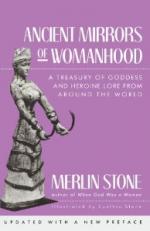|
This section contains 169 words (approx. 1 page at 400 words per page) |

|
Chapter 126, Aphrodite Summary and Analysis
Aphrodite is initially regarded as a multifaceted Goddess concerned mostly with prophesies and battles. It is the Hellenic Greeks that come to regard Aphrodite as the essence of erotic love. Herodotus writes that Aphrodite was introduced to Greece by the Phoenicians of Canaan. The Greeks referred to the shrines of Ashtart as belonging to Aphrodite. Perhaps it is this connection that caused the shift in Aphrodite's image—because of the sexual rituals associated with Ashtart and Ishtar in Canaan and Babylon. It is interesting to note that the Romans knew Aphrodite as Venus, the sacred star of Ashtart, Ishtar, and Inanna.
Adonis is Aphrodite's son and lover whose life is taken very early. He is wounded by a wild boar, and his blood colors the poppies in the Cyprian Troodos Mountains. Just as in the temples of Ashtart...
(read more from the Chapter 126, Aphrodite Summary)
|
This section contains 169 words (approx. 1 page at 400 words per page) |

|




